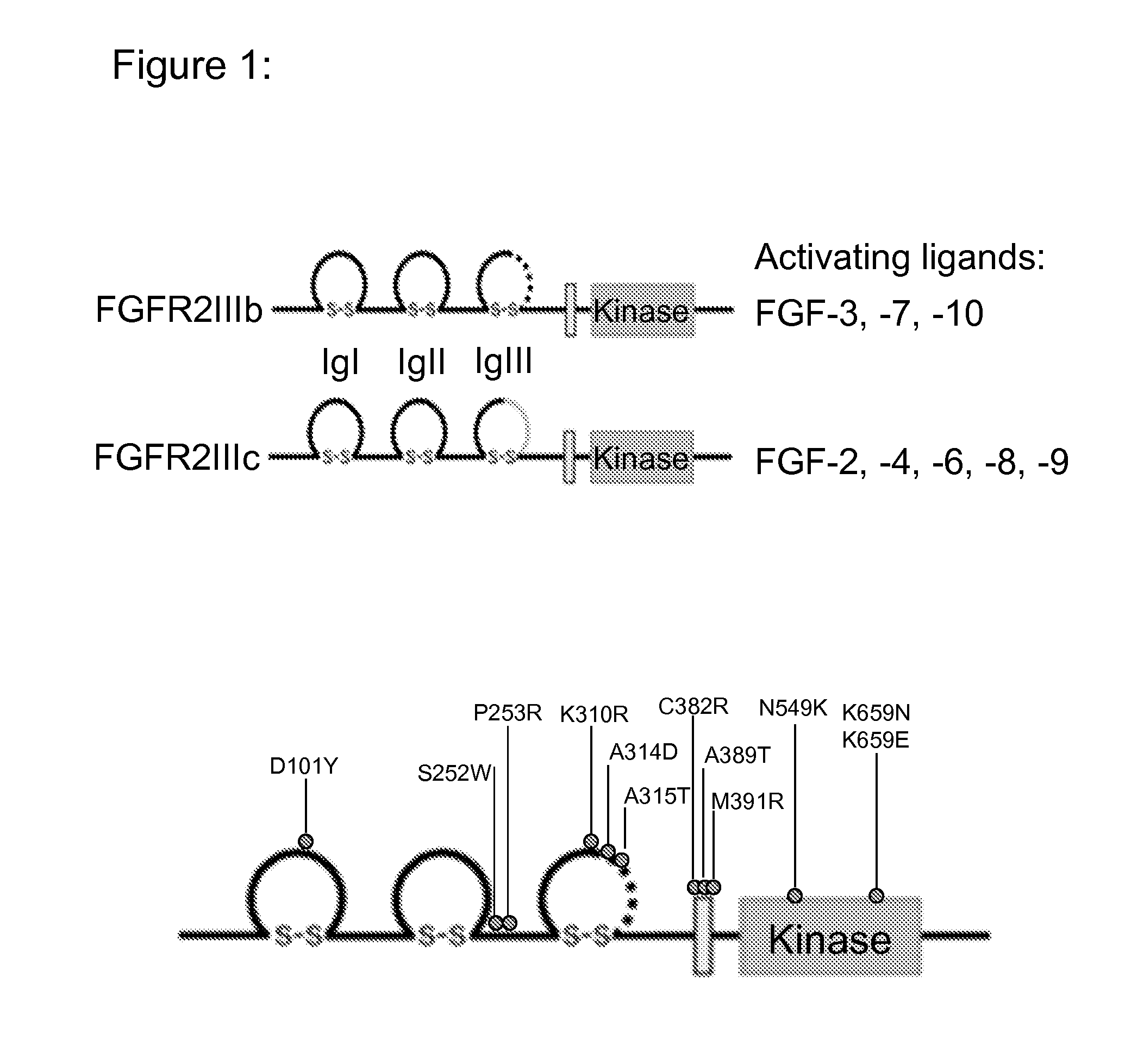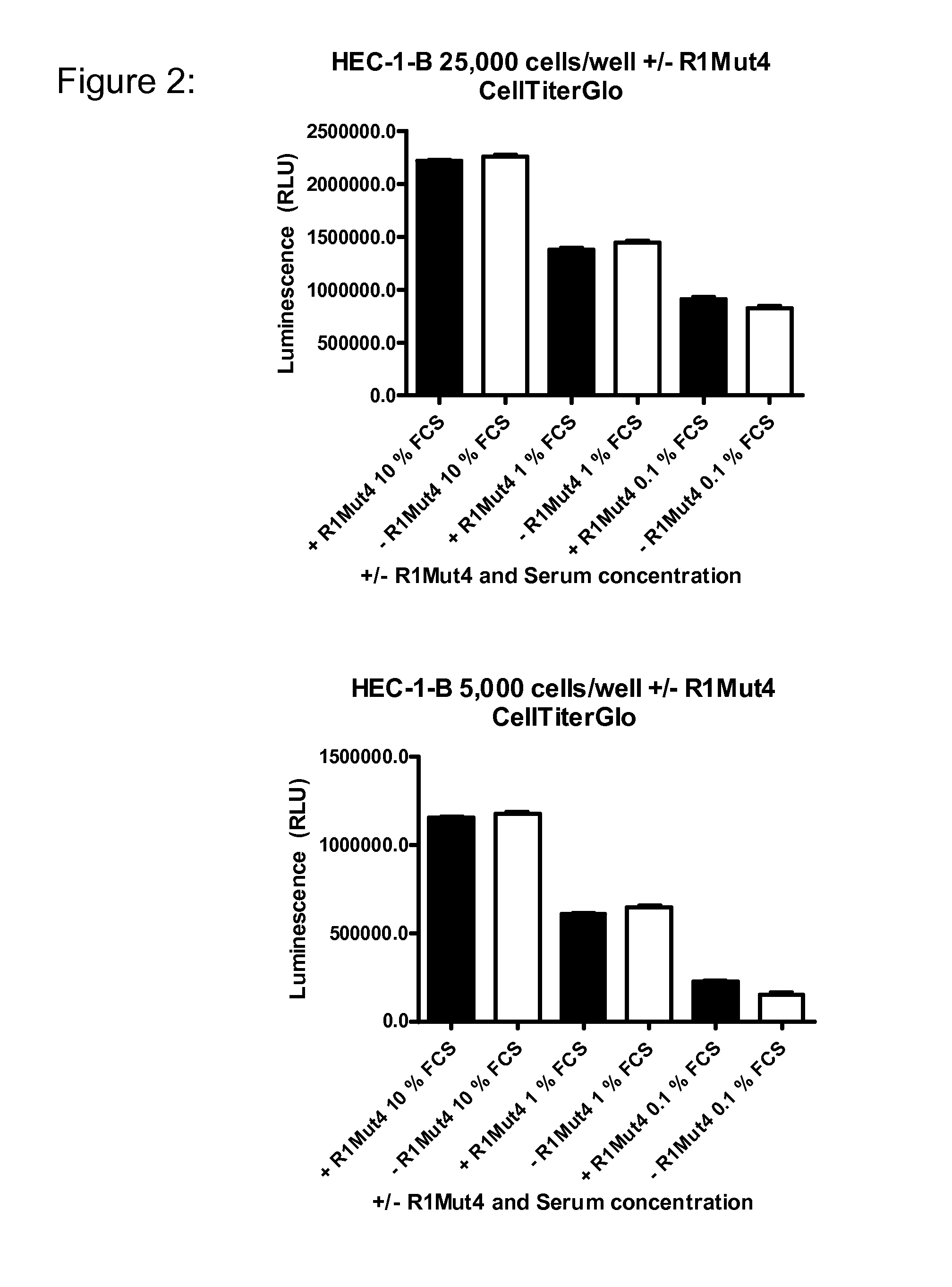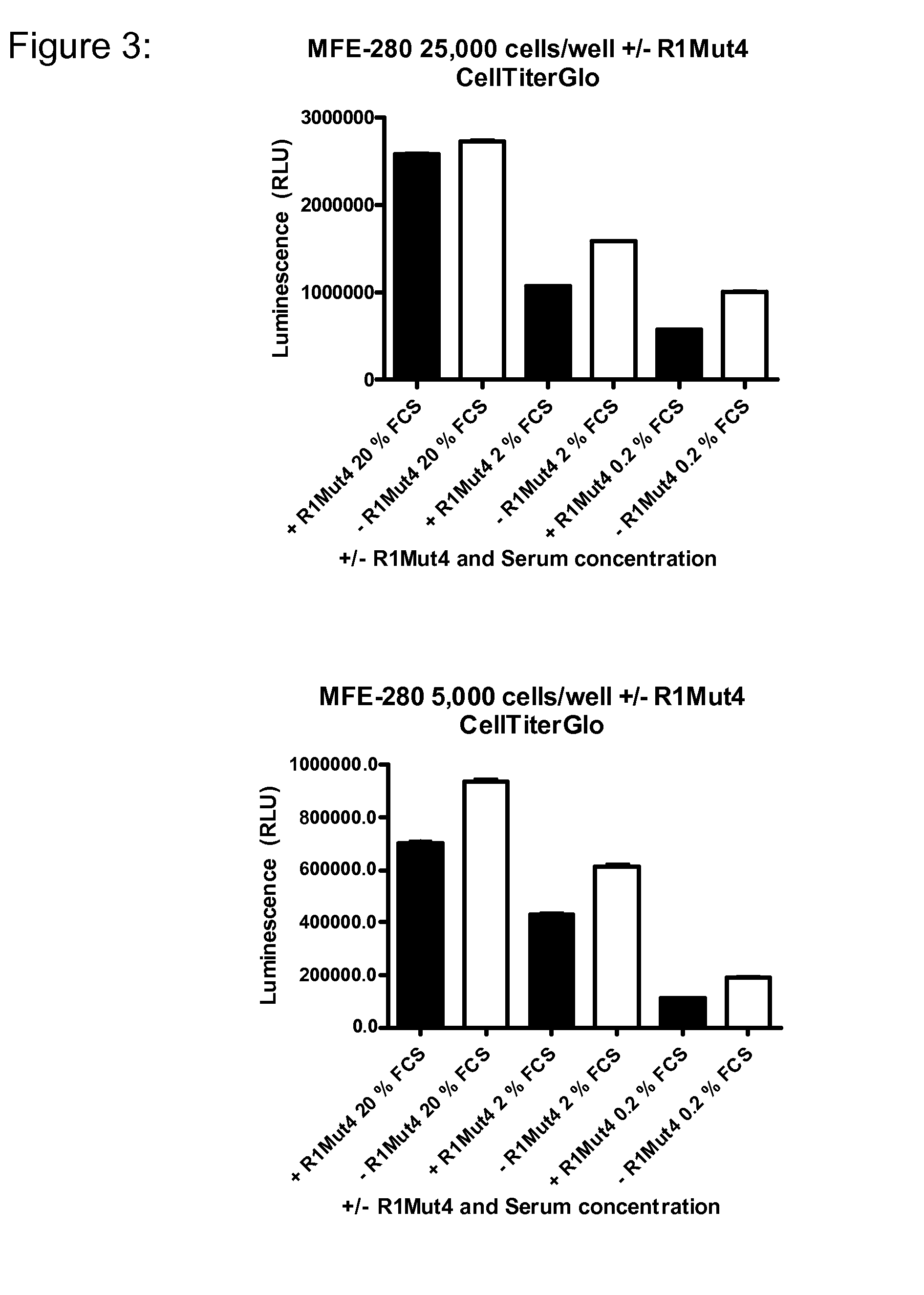Use of fgfr1 extra cellular domain proteins to treat cancers characterized by ligand-dependent activating mutations in fgfr2
a technology of fgfr2 and extracellular domain, which is applied in the field of fgfr1 extracellular domain (ecd) proteins for cancer treatment, can solve the problems of disrupting the splicing-based regulation of fgfr2 function, poor survival rate of patients whose cancer and poor survival rate of those who cannot be treated surgically. , to achieve the effect of inhibiting tumor growth and dramatic inhibition of tumor growth
- Summary
- Abstract
- Description
- Claims
- Application Information
AI Technical Summary
Benefits of technology
Problems solved by technology
Method used
Image
Examples
example 1
An FGFR1 ECD Fc Fusion Molecule Inhibits FGFR2S252W Mutant Endometrial Carcinoma Cell Lines in Tissue Culture
[0107]The endometrial carcinoma cell line, HEC-1-B (Cat #HTB-113), encoding a wildtype genomic FGFR2 locus (Dutt et al. 2008; PNAS 105(25):8713-7) was obtained from American Type Culture Collection (ATCC; Manassas, Va.) and maintained in Minimum Essential Medium Eagle with Earle's balanced salt solution (ATCC) supplemented with 2 mM L-glutamine 0.1 mM non-essential amino acids, 10% fetal bovine serum (FBS; all from Mediatech, Inc. Manassas, Va.) and 1.0 mM Sodium Pyruvate (Sigma-Aldrich, Milwaukee, Wis.). Endometrial cell lines MFE-280 (DSMZ cat#. ACC 410) and MFE-319 (DSMZ cat# ACC 423) with a S252W mutation in the FGFR2 gene (Dutt et al. 2008; PNAS 105(25):8713-7) were obtained from Deutsche Sammlung von Mikroorganismen and Zellkulturen GmbH (DSMZ: Germany) and maintained in 40% RPMI 1640, 40% Minimum Essential Medium (with Earle's salts) supplemented with 2 mM L-glutamine,...
example 2
An FGFR1 ECD Fc Fusion Molecule Inhibits Endometrial Tumor Growth in an FGFR2S252W Murine Xenograft Model
[0112]The anti-cancer activities of R1Mut4 were tested in a xenograft endometrial cancer model using human endometrial carcinoma MFE-280 cells with a S252W mutated FGFR2 genomic locus. MFE-280 cells were maintained in 40% RPMI 1640, 40% Minimum Essential Medium (with Earle's salts) supplemented with 2 mM L-glutamine, 20% FBS (all from Cellgro) and 1× ITS (Insulin, Transferrin and Sodium Selenite, from Sigma) at 37° C. in a humidified atmosphere with 5% CO2. Semi-confluent cells (˜80%) were re-suspended in PBS without calcium and magnesium (Cellgro) at a concentration of 1×108 cells per ml. Matrigel basement membrane matrix (BD Biosciences) was added to 50% (vol / vol) to give a final concentration of 5×107 cells per ml and the mixture stored on ice until implantation into mice.
[0113]For the xenograft experiments, twenty CB17 SCID mice (Charles River Laboratories) were used. On day ...
example 3
An FGFR1 ECD Fc Fusion Molecule Inhibits Endometrial Tumor Growth in a Therapeutic FGFR2S252W Murine Xenograft Model in a Dose-Dependent Manner
[0117]The dose-dependent anti-cancer activities of R1Mut4 were tested in a therapeutic (or established) xenograft endometrial cancer model using human endometrial carcinoma MFE-280 cells with a S252W mutated FGFR2 genomic locus. MFE-280 cells were maintained as outlined in Example 2. For the xenograft experiments, forty CB17 SCID mice (Charles River Laboratories) were used. On day 1 mice were shaved on the right hind flank and then inoculated subcutaneously with 5×106 (100 μl) of the MFE-280 cells prepared as described in example 1. Following implantation tumor sizes were measured every 3 days until tumors reached the size of 150-200 mm3 (average day 28 post-tumor implantation). The mice were then randomly distributed into 4 groups of 10 mice based on their body weight and tumor size. Animals were dosed with the test articles according to the...
PUM
 Login to View More
Login to View More Abstract
Description
Claims
Application Information
 Login to View More
Login to View More - R&D
- Intellectual Property
- Life Sciences
- Materials
- Tech Scout
- Unparalleled Data Quality
- Higher Quality Content
- 60% Fewer Hallucinations
Browse by: Latest US Patents, China's latest patents, Technical Efficacy Thesaurus, Application Domain, Technology Topic, Popular Technical Reports.
© 2025 PatSnap. All rights reserved.Legal|Privacy policy|Modern Slavery Act Transparency Statement|Sitemap|About US| Contact US: help@patsnap.com



